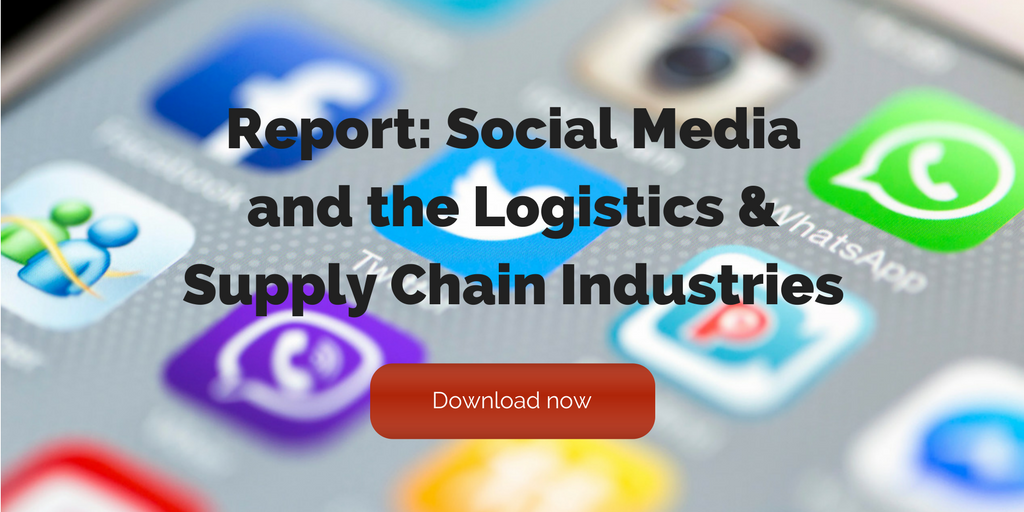
by Elizabeth Hines | Aug 17, 2015 | Blog, Leadership, Strategy

Although our economy has rebounded since the 2008 downturn we have come to realize that the days of abundant resources are gone. Our current and future economic reality consists of scarce resources and a shrinking opportunity base. Managers face the challenge of expanding their business and reducing their spending, while still making meaningful progress now and into the future.
Whether you are a small, mid-market, or Fortune 500 company, you will recognize the challenge of reconciling your management needs in the face of budget reductions. Doing things the same old way is not effective. You need a way to quickly turbo charge your business without breaking the bank. The question remains — how? Leading companies have used a secret weapon against these challenges for years: interim management services strategy.
Here are 4 questions to ask yourself to determine if interim management services are right for you:
- In your current or last budget cycle have you been asked to raise your profit targets with flat or reduced expenses?
- Do you have a customer or market segment that is a good fit for your company, but you don’t have the resources or time to explore, define and win that business?
- Do you need management expertise in a specific area, but don’t want to make a full time hire or can’t afford to make one?
- Do you have a window of opportunity to make a meaningful business move but can’t afford the ramp up time or learning curve to make the most of it?
If you answered yes to any of the above questions, an interim management services strategy is a weapon you should think about using too. Think of it as “management as a service”. A model designed to provide specific executive, management, sales or operational expertise when and where you need it, for exactly as long as you need it, at a fraction of the time and cost expense of hiring, assimilating and assigning a full-time professional.
Interim management services allow you to make meaningful progress in your strategic initiatives without incurring a large upfront investment in time, people, or budget. It allows you to easily navigate unique challenges, fill leadership voids during transitions, or obtain expertise on special projects and initiatives. It’s effective and efficient talent, when you need it, for how long your needs exist.
Add an interim management strategy to your strategic arsenal and watch your business grow.
Fronetics Strategic Advisors is a leading management consulting firm. Our firm works with companies to identify and execute strategies for growth and value creation.
Whether it is a wholesale food distributor seeking guidance on how to define and execute corporate strategy; a telematics firm needing high quality content on a consistent basis; a real estate firm looking for a marketing partner; or a supply chain firm in need of interim management, our clients rely on Fronetics to help them navigate through critical junctures, meet their toughest challenges, and take advantage of opportunities. We deliver high-impact results.
We advise and work with companies on their most critical issues and opportunities: strategy, marketing, organization, talent acquisition, performance management, and M&A support.
We have deep expertise and a proven track record in a broad range of industries including: supply chain, real estate, software, and logistics.


by Fronetics | Aug 13, 2015 | Blog, Marketing, Social Media, Strategy
 With LinkedIn this month reporting a 33% year-over-year growth of revenue and a 21% increase in membership, it remains solid in its role as the primary social network for business. Data from outside the company confirm its dominance. A University of Massachusetts study published earlier this year examined social media use by the fastest-growing corporations in the U.S. and found that LinkedIn is the platform of choice (94%) for America’s top companies. There’s little doubt that the 380 million member social media giant has transformed the relationship between companies, its customers, and its employees. But with so many potential connections and opportunities for engagement, how can your company squeeze the most out of its efforts to connect with audiences on LinkedIn? Look to your employees.
With LinkedIn this month reporting a 33% year-over-year growth of revenue and a 21% increase in membership, it remains solid in its role as the primary social network for business. Data from outside the company confirm its dominance. A University of Massachusetts study published earlier this year examined social media use by the fastest-growing corporations in the U.S. and found that LinkedIn is the platform of choice (94%) for America’s top companies. There’s little doubt that the 380 million member social media giant has transformed the relationship between companies, its customers, and its employees. But with so many potential connections and opportunities for engagement, how can your company squeeze the most out of its efforts to connect with audiences on LinkedIn? Look to your employees.
Consider this case study in “smart ownership”. Aiming to increase the popularity of its Instagram account, the dedicated social media team at National Public Radio (NPR) did something unheard of – they turned ownership of its Instagram account over to its multimedia team. The team reasoned that aligning the organization’s visual strategy with a digital medium that’s innately visual could be the key to deriving the most value from the social network. In short, NPR recognized the value of extending ownership of its social media efforts to its employees.
Here’s why your business should leverage the popularity of LinkedIn and develop its own smart ownership strategy:
Broadening inclusion of your company’s LinkedIn efforts beyond a sole person or dedicated social media team lets employees share ownership of your brand. A strategy informed, directed, and executed by a single team or person can sometimes be narrow in scope. Encouraging the participation of your employees expands perspective and gives your in-house subject matter experts a digital voice – one that might connect beautifully with your leads and prospects.
Encouraging your employees to engage with your company on LinkedIn helps your brand reach new audiences. Your company benefits in a number of ways when an employee connects with it on LinkedIn. When a new employee adds his new work experience to his profile, your company’s logo is displayed on his profile for each of his connections to see. When an employee likes, shares, or comments on the content published by your business, a notification is generated and seen by his connections. These seemingly routine updates or tasks, like personal LinkedIn profile updates, can turn into real opportunities to reach an expansive audience.
Engaging employees on LinkedIn creates trust and substantiates professional relationships. Several years ago, faced with the rapid emergence of social media, many employers chose to ban social media sites from company networks thinking that if they could prohibit the use of these sites during work hours, employees would be more attentive to their work and thus more productive. What we know now, is that these types of strategies stymy growth and propagate missed opportunities. The author of a 2013 study examining the link between social media and worker productivity has this to say: “… the ubiquitous digital connectivity altered workers’ sense of ‘presence’ and helped rather than hindered the effective completion of collective tasks.” The message here is two-fold: encouraging employee use of LinkedIn builds trust and increases productivity.
Promoting LinkedIn as a company-endorsed channel of distribution builds positive branding and marketing opportunities. Quite simply, who better to promote the work of your company than the employees who carry out the day-to-day responsibilities? And because people are far more likely to interact with individuals over brands, your company’s promotion by your employees is likely to drive more engagement.
Communicating with employees via LinkedIn can take your social efforts beyond marketing. While it’s true that most businesses use social media to ultimately affect their bottom line, not all social media efforts need to be strictly marketing. A robust LinkedIn community of employees can serve to both improve employer-employee communications and enhance the distribution of public information. Need to get your messaging out quickly? Use your employee base on LinkedIn to help distribute timely messaging or to clarify your company’s position on an emerging matter.
Building a successful smart ownership strategy isn’t about giving away ownership, but about building inclusion and better aligning existing resources. Businesses that encourage employee engagement on LinkedIn are well-positioned to build brand ambassadors out of those who know their business most intimately.
Fronetics Strategic Advisors is a leading management consulting firm. Our firm works with companies to identify and execute strategies for growth and value creation.
Whether it is a wholesale food distributor seeking guidance on how to define and execute corporate strategy; a telematics firm needing high quality content on a consistent basis; a real estate firm looking for a marketing partner; or a supply chain firm in need of interim management, our clients rely on Fronetics to help them navigate through critical junctures, meet their toughest challenges, and take advantage of opportunities. We deliver high-impact results.
We advise and work with companies on their most critical issues and opportunities: strategy, marketing, organization, talent acquisition, performance management, and M&A support.
We have deep expertise and a proven track record in a broad range of industries including: supply chain, real estate, software, and logistics.


by Elizabeth Hines | Aug 12, 2015 | Blog, Strategy, Supply Chain

With today’s merger and acquisition (M&A) activity at the highest level since 2007, up 38% over the same period last year, there’s been a great deal of shifting lately. In the high-tech industry, analysts are following a particular trend among original equipment manufacturers (OEMs) – mergers and acquisitions of niche aftermarket service industry participants. Electronic Purchasing Strategies writes about the aftermarket industry: “The aftermarket has long been just an afterthought to the sales and marketing processes but today more and more OEMs have finally begun to realize its strategic importance as a competitive differentiator.” These types of deals continue to become increasingly attractive because of the upside opportunities they present; consequently, acquirers need to fully understand the complexities involved in positioning their companies with such adjoining business growth.
What makes small, niche aftermarket service industry participants attractive?
In order to answer this, we must first understand the context of aftermarket services. When referring to the high-tech space, the term “aftermarket services” encompasses the services commonly referred to as technical support; field support; service parts logistics; electronics repair; asset recovery; data destruction; and e-cycling. These service markets have been historically served by specialized providers, each delivering their niche service offering (such as service parts logistics) to a select group of customers.
Typically, their customer density limits are bound by either a specific relationship base or the capital needed to adequately service their customers and keep them coming back. These companies can range in size from $10s of millions in revenue to $100s of millions in revenue (but typically fall between $20 million and $100 million in annual revenue). Due to the fragmentation of their service offerings and a size and geography limitation, this marketplace grew into a sizeable cottage industry with many participants servicing the major brands in the high-tech space. Even more interesting, their gross profit margins can range from approximately 25-to-50-plus percent. These margins are fairly sizeable in an overall industry that considers mid-teens as respectable gross profit margins. Due to these industry characteristics, it’s not hard to see why acquisition-minded participants in this space have been active.
What does a “typical” acquirer look like?
The typical acquirer of these aftermarket services companies is a billions-in-revenue national or multi-national organization. These organizations enjoy gross profit margins in the mid-teens and have typically grown through vertical consolidation methods through which they get bigger revenue numbers but similar financial results on a percentage basis.
What these larger acquirers bring to the table is cash to invest, a global customer base and a platform to service them from. What the aftermarket service company brings to the table is an adjacent revenue opportunity for the acquirer—as opposed to the historical vertical acquisition strategy—that comes with double or triple the gross profit percentage. When you spread that over the thousands of customers the acquirer has relationships with, it adds up quickly in terms of net income and earnings per share.
While that’s really good news, due to the fragmentation of the services marketplace, in order to have a robust offering and realize that potential, one needs to acquire more than a handful of these service providers. And that’s exactly what such large acquirers have been doing. They have been stringing together adjacent and complimentary services to their existing businesses, thus positioning themselves for margin expansion in the longer term—a winning strategy.
Is this truly bringing benefit to the marketplace for customers?
Let’s first look at it from each of the constituent’s perspectives. The customer now has the ability to access services for every phase of their product lifecycle—from design to de-manufacture and all of the services management portfolios in between. And if they choose, they can gain leverage by doing this within a handful of qualified vendors. Prior to these acquisitions, it was a multi-vendor, multi-geography, multi-service offering. Anyone who lived this will tell you that just the tracking of vendor performance will keep a team busy let alone leave time for any innovation in one area. Those economies alone would sell some purchasing professionals on the idea.
How do acquirers benefit from these types of acquisitions?
From the acquirer’s perspective, it enables new, more profitable and less commoditized ways to interact with existing customers and gain new ones. All of this activity should lead to higher levels of operating income as well as higher earnings per share all driven by the higher margin profile of these services. But because these acquisitions come in small “chunks,” acquirers need to be thoughtful about their target companies as well as their go-to market strategies. Developing synergies with existing sales and service teams goes a long way in this area.
What do aftermarket services industry participants stand to gain?
For aftermarket services industry participants, this M&A activity unlocks value for their businesses that would otherwise go unrealized. Most of these organizations run undercapitalized and with some level of debt service (long or short term). This activity allows owners and/or shareholders a way to break that cycle and reset their balance sheets. It also offers the opportunity to go beyond their historical customer and capital constraints and really grow their businesses in ways that would not have been possible without a strategic acquirer. Additionally, new participants now have an “end-game-strategy” as long as their business strategy, technical competency and service delivery are carefully thought out.
Looking forward: What are the predictions for both short & long-term growth?
In the short term, we will continue to see more acquisition activity in these areas. There are still good aftermarket service companies in the marketplace and there are still holes in the service offerings of the larger acquirers. As these activities mature, we will see the industry benefits mentioned earlier really begin to multiply. In the longer term, as the acquisition and go-to market strategies become more refined and the service offerings more fine-tuned, these benefits will really have a lasting impact on how customers access these services and from whom. Not to mention, the positive and long lasting bottom-line impact to the service vendor. The only thing left to do is execute.
Fronetics Strategic Advisors is a leading management consulting firm. When it comes to M&A, our firm is able to execute from target identification through post-deal integration and value creation. At Fronetics Strategic Advisors we work with our clients to build and capture value.

![[Infographic] Content Marketing in Manufacturing: What Works, What Needs Work](https://www.fronetics.com/wp-content/uploads/2024/10/Infographic-content-marketing-in-manufacturing-801x675.png)
by Fronetics | Aug 11, 2015 | Blog, Content Marketing, Manufacturing & Distribution, Marketing, Social Media, Supply Chain
Manufacturing is experiencing a graying of its industry. With millions of workers at or near retirement age, many top posts are occupied by workers who have seen radical changes in the workplace over the course of their careers. And while executives have largely embraced advances in technology to transform the operations side of manufacturing, research shows they’ve been slow to adapt marketing and sales processes using emerging digital tools and technology.
Earlier this year the Content Marketing Institute released its annual report on the current state of content marketing within the manufacturing industry. This year’s report shows that the manufacturing industry continues to make strides in leveraging digital tools for sales and marketing purposes. Still, because these efforts are fairly new, the report also captures a sense of ambiguity about these new marketing strategies, particularly when it comes to measuring program success. Other notable findings from the study reveal that more than two-thirds of manufacturers are using content marketing to build brand awareness, boost sales, and generate leads. The report also uncovers some marked changes between the most recent report and last year’s report; there has been a shift in both the way manufacturers are choosing to distribute content and their perceived effectiveness of those tactics.
Check out our Infographic for a more detailed look at the report’s findings:

Fronetics Strategic Advisors is a leading management consulting firm. Our firm works with companies to identify and execute strategies for growth and value creation.
Whether it is a wholesale food distributor seeking guidance on how to define and execute corporate strategy; a telematics firm needing high quality content on a consistent basis; a real estate firm looking for a marketing partner; or a supply chain firm in need of interim management, our clients rely on Fronetics to help them navigate through critical junctures, meet their toughest challenges, and take advantage of opportunities. We deliver high-impact results.
We advise and work with companies on their most critical issues and opportunities: strategy, marketing, organization, talent acquisition, performance management, and M&A support.
We have deep expertise and a proven track record in a broad range of industries including: supply chain, real estate, software, and logistics.


by Elizabeth Hines | Aug 10, 2015 | Blog, Content Marketing, Marketing, Strategy

Being in the strategic advisory space, I get a lot of exposure to various business strategies, strategic plans, and sales plans, both internally to organizations and from outsiders looking to raise money or gain influence.
When it comes to strategic planning, too often there is “creative accounting.” That is, the artful creation of financials that match and make numerical sense, but have very little credibility in the real world because the important business details are left out.
Businesses spend far too much time creating spreadsheets and devote too little time paying attention to information that really matters. As a result, any plan that cannot be substantiated outside of a spreadsheet is doomed to be discounted…and so are the presenters.
Don’t get me wrong, you need to have a financial base and rock solid financial modeling in your planning efforts. It is, however, equally important to spend time on building credibility in those numbers by focusing on what interested parties need to know outside of the spreadsheets in order to make an informed decision.
I encourage clients to focus on these 4 items in order to build credibility in their financial plans and create a winning business model:
1) What is the opportunity? What the business will sell, who is buying, why are they buying, how much are they buying now, and how much and how fast will their buying increase (or decrease) and why?
2) Who are the people involved? The internal team, the external team, any outside resources or partners providing key services or important resources, contingencies for the partnerships and the switching costs involved if needed.
3) The financial context. How will interest rates, buying trends, competition, demand, and for that matter, supply shape the financials of the plan.
4) The up-side and the down-side risk. What can go right or wrong, to what extent (up or down) and how will the team or company adjust to the increased revenue opportunity as well as the opposite…the decrease in the need for the product or service. Do these risks and rewards make sense in real world scenarios?
Gone are the days where financial engineers can develop models without operational integrity. Business models that make sense financially and operationally are now in vogue…thank goodness.
Fronetics Strategic Advisors is a leading management consulting firm. Our firm works with companies to identify and execute strategies for growth and value creation.
Whether it is a wholesale food distributor seeking guidance on how to define and execute corporate strategy; a telematics firm needing high quality content on a consistent basis; a real estate firm looking for a marketing partner; or a supply chain firm in need of interim management, our clients rely on Fronetics to help them navigate through critical junctures, meet their toughest challenges, and take advantage of opportunities. We deliver high-impact results.
We advise and work with companies on their most critical issues and opportunities: strategy, marketing, organization, talent acquisition, performance management, and M&A support.
We have deep expertise and a proven track record in a broad range of industries including: supply chain, real estate, software, and logistics.


by Fronetics | Aug 6, 2015 | Blog, Logistics, Marketing, Social Media, Supply Chain, Transportation & Trucking

Transportation and logistics is a field that is booming. The business is a money-maker and a cornerstone of day-to-day functioning. It’s one that has been present for centuries. We are well past the Age of Discovery, but transportation and logistics companies carry on the torch of moving products that people need and desire around the world. One might wonder if the sultriness of the Silk Road and the Spice Trade has lost its allure and sexiness, but that needn’t be the case. Social media has brought about a fantastic opportunity for transportation and logistics companies to share their successes, display their offerings, create community, and convert leads.
Where to Start
First, think about it. Many transportation and logistics companies think about social media and how to use it, but cite a lack of time as a reason they haven’t explored the various platforms. Thinking about how social media can work for your logistics or transportation company is the first stop towards progress.
Second, learn about it. Understanding individual usage of social media versus B2B usage of social media is important. Do your consumers use LinkedIn, Facebook, Twitter? Where are your competitors finding success, and what platforms are they missing? Once you figure these things out the impulse will be to get started. Post away! Tweet away! Blog away! However, creating a Facebook page or a Twitter account will not draw in your community of employees or existing clients, and will not attract potential customers or clients. Having an account is great thing, but it’s not the most important thing. Knowing how to express your brand, what content to curate and create, and how frequently to share content is critical to social media success.
Learning is a process and takes time. Set up also takes time. Hiring an outside agency to do this work can both save you time, and will ultimately reap ROI. Marketing strategy companies have been doing this work already, and understand how to highlight your company. They know the market, and once they get to know you a bit better, you can work together to figure out how to express your brand through the platform of social media.
What to Highlight
Once you figure out who to focus on and how to reach that community, creating and curating your unique content is key. What is most informative and helpful to your clients? What will feel meaningful to them? What will catch and hold their attention? How do you want people to perceive you, your employees, and your products/services? Some studies have shown that conversion rates from social media can be 100% more effective than from outbound marketing, so getting this right could greatly benefit your company.
The joy of social media is its speed and its ability to humanize a company. A company’s Twitter feed is not like its white papers. Social media is known for personalizing things, so let people know the more human side of your business. Who are the drivers? Who are the employees? What are the success stories? Celebrate your community, partners, and clients. This is a place to engage with other businesses – to educate them and learn from them.
One perfect example of a logistics company that thrives in this arena is UPS. The logistics company has found success with unique, fun, interesting, frequent posts, tweets, and blogs. They also highlight their “heroes” by telling stories, often through video, of their heroic drivers who have been known to save lives. They show the human side of delivery. They connect. And when it comes to social media, it’s all about connection.
Two other examples of companies that excel in this area are Sourcemap and Transfix. Both companies have leveraged social media as a platform for growth. Sourcemap’s founder and CEO Leonardo Bonanni credits social media for the success for his business: “Sourcemap wouldn’t be here without social media.” For Transfix, social media and digital technologies enables the company to make the trucking industry more efficient and user-friendly.
Fronetics Strategic Advisors is a leading management consulting firm. Our firm works with companies to identify and execute strategies for growth and value creation.
When it comes to marketing we work with our clients to create and execute strategies that drive success and elevate their brand position within the industry. Unlike other firms, we align marketing programs with business objectives and, through a data driven approach, are able to deliver results with a targeted ROI. Our team is comprised of strategists, marketing professionals, writers, designers, and experts in social media. Together we leverage our experience to increase brand awareness, position our clients as thought leaders, drive meaningful engagement with prospects and customers, and help businesses grow.








![[Infographic] Content Marketing in Manufacturing: What Works, What Needs Work](https://www.fronetics.com/wp-content/uploads/2024/10/Infographic-content-marketing-in-manufacturing-801x675.png)



